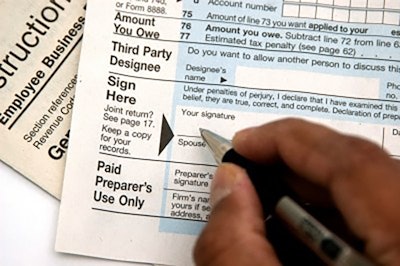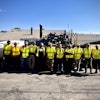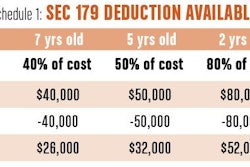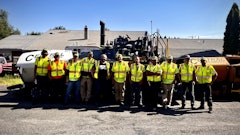
On a day-to-day basis, owners and managers of contracting firms do what they need to do to keep the business running. Whether it’s purchasing a new piece of equipment to replace an outdated one, or hiring extra help to handle a brand new project, they tend to focus on “taking care of business” now and put off thinking about the tax consequences until later.
But doing so often comes at a cost. Here are four tax mistakes that contractors commonly make — some that can leave serious money on the table, or worse, land you in trouble with the tax authorities.
1. Failing to depreciate new equipment correctly
With the signing into law of the Protecting Americans from Tax Hikes (PATH) Act late last year, there are two opportunities to decrease taxable income by a significant amount through depreciation. Both were made permanent and retroactive to January 1, 2015 by the new law.
One tax provision — Section 179 — allows for an immediate tax depreciation deduction of the entire cost of equipment and machinery in the year it is placed into service. Although not all property, plant and equipment purchases are included, all construction equipment and machinery purchases are allowed. Total property, plant and equipment purchases must be less than $2 million in order to receive the full depreciation benefit of $500,000. Anything over $2 million in purchases is a dollar-for-dollar decrease in section 179 tax depreciation expense.
Another tax benefit that was extended through 2019 with the passage of the PATH Act was the Section 168k or “bonus depreciation” provision. This allows for an immediate 50% tax depreciation expense in the year of purchase on certain property, plant and equipment purchases.
2. Overlooking the fuel tax credit
Many contractors miss out on this one. Either they are unaware that it exists or are unsure if they qualify for it. But the tax savings can be substantial. More valuable than a tax deduction, a tax credit of any kind is a direct decrease of your tax liability.
This particular credit is for federal taxes paid on fuels. The credit applies to various types of fuels, but the two that normally pertain to contractors are :
- the off-highway business use of gasoline in machinery and trucks
- the use of undyed diesel fuel
To take advantage of the fuel credit, your company’s use of these two types of fuels should be tracked throughout the year. The credit is based on total number of gallons used and can range from 18 to 25 cents per gallon.
3. Overlooking the domestic production activity deduction
“DPAD” is a little-known method to decrease taxable income that doesn’t pertain to all industries; however, construction companies are one of the few that do often benefit. The deduction is based on 9% of “qualified production activities income” from U.S. based operations.
To make sure the credit is taken accurately, it is generally a good idea to invest some effort ahead of time to have the proper cost accounting mechanisms in place. These will help you distinguish between qualified and non-qualified production activities.
An example of a qualified production activity might include a company that is an installer and servicer of HVAC units and also is a sheet metal contractor. The DPAD would be based on the sheet metal contracting part of the company so the respective revenue and expenses would need to be broken out in order to calculate the deduction.
A company whose entire business is construction of commercial buildings and nothing else is an example of a non-qualified production activity. In most cases with this example the deduction would be based on the entire company's allowable revenue and expenses. You would not need to segregate the different business segments like the above example.
Proper tracking of revenue from various construction services (and the expenses that go along with it) is critical. If the deduction is taken on non-qualified activities, a restatement of taxable income may be required in future years, and the additional taxes due may also be subject to penalties and interest.
4. Misclassifying employees as independent contractors
Should the people working on your jobs be issued a w-2 or a 1099? This question causes confusion for employers across the board, but especially for those in the construction trades. Many contractors would understandably like the answer to be the latter in order to avoid paying the employer portion of taxes, unemployment insurance and w-2 filings, costs which when combined can approach 20% of wages.
Unfortunately the decision is not based on what the employer would like to save or what the employer believes the person may be. The decision must be made according to (among other things) who has “control” of the employee or independent contractor for the work that the worker is performing.
A 1099 employee (independent contractor) has control over the work they do. They are hired independently from other employees of a company to perform a specific job, and they — not the employer — control the completion of that task.
Still, some companies decide to classify what should be a w-2 employee as a 1099 employee under the mistaken belief that the consequences for misclassification are minimal. Not true. If an employee qualifies as a w-2 employee by law but is not paid that way, the penalties for the improper filing can run into the hundreds and sometimes thousands of dollars — per employee.
Although the up-front cost savings of issuing a 1099 rather than a w-2 is certainly tempting, the potential penalties in the long run — including increased scrutiny by federal and state tax authorities — are just not worth the risk. That’s why it pays to take the correct steps at the beginning of a worker’s engagement with your company to ensure that he or she is classified properly.
Vinny Botta is a principal in the Boston-area CPA and business advisory firm Rucci, Bardaro & Falzone, PC. Through the firm’s Construction Business Services Group, he offers tax planning advice and services to the owners and managers of contracting firms of all sizes. For a complimentary copy of “Employee vs. Independent Contractor: 7 Tips for Business Owners,” contact Mr. Botta at 781-321-6065 or [email protected].


















